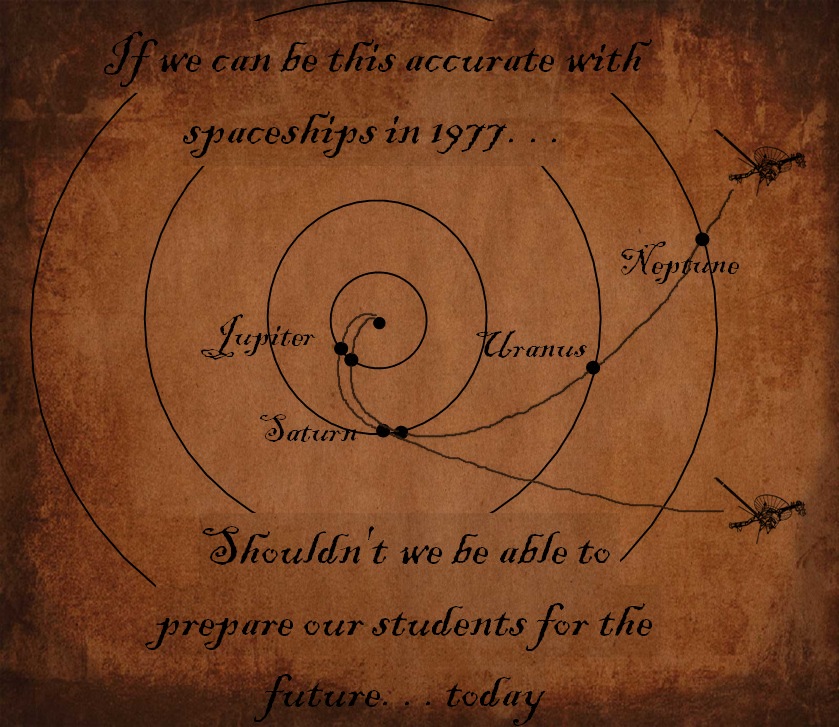Tim Clark's post on the Ikea Effect and BYOT got me thinking about students building real things. The idea behind the Ikea Effect (offered here by Dan Ariely) is that when people work at something, they like it better. Requiring to add an egg makes instant cake mix sales increase; putting together that bookshelf causes a higher valuation of the bookshelf.
This leads to a discussion about students producing over consuming. As opposed to learning from Math tutorial videos (consuming), students can be making Math tutorial videos (producing). The videos they make will be valued higher than their teacher's. I have felt the pull from consuming to producing in my own life. Here is my most recent Facebook update:
When we blog, we create. When we tweet, we add ideas to the great melting pot of global ideas. Further, we receive feedback, sometimes near instantly. We feel part of something. This feeling of connection and creation has even beat out the draw of social games for me which can be initially addicting but don't have the staying power. Pursuing a feeling of "I made that" will win in the long run.
So what does it take to open the door to authenticity, to shift from consumption to production in the classroom?
My first attempt at authentic learning
When I moved from student services to grade 7 six years ago, teaching Ancient Civilizations was completely new to me. My solution was to parse out the curriculum to the students. They made a handout, a presentation, and a quiz. Then each student would take a class and teach while I learned and tried to catch errors.
The buy in was good but the setup was long. I booked the computer lab for a month to the shagrin of my colleagues. And there were some funny looks when in October I said I hadn't started Mesopotamia yet. In the end, though, it paid off. The curriculum was covered and learning took place.
To go deeper into this idea, though, teachers must ask themselves: what are real things? Is a PowerPoint on Mesopotamian law truly real to the student. No. This is Mr. Robinson's reality, not the students. In order for something to be genuine, the author has to give a piece of themselves in the creation.
And that is happening right now. Your students are sharing their pictures on Instagram and Tumblr. They are sharing their video on Youtube. They are sharing their words and ideas on Facebook. They are sharing creations on Minecraft. There is authentic creation going on without the teacher having to say boo.
So the questions become: how do we bring that authentic creative spirit into the classroom? And how do we guide the learning into meaningful avenues?
Bringing authentic creation into the classroom and guiding it into authentic learning, I am finding, is a big part of BYOT. In BYOT, students bring their own electronic creation/networking tool and use it in the context of the outcomes we all feel as necessary for learning to take place. When I was pondering this, three P's emerged that I would like to share.
Power
Students require inclusion in the decisions around the learning goals of their classroom. True, there is a set of Prescribed Learning Outcomes. But students need to be given the why's and allowed to choose the how's. This is not easy. I believe the teacher needs to do some soul searching, some questioning, and particularly some listening. Giving over power to the students evokes buy in. And the more power we give, the greater influence we have.
Some questions to ponder:
"Am I stifling the creativity in my class?"
"Are there things I am teaching that don't make sense anymore?"
"Can I give my students more choice and control?"
Permission
Permission and access, really. When a student comes to school with their own PCN (Personal Creation/Connection Network) through lets say Tumblr or Facebook, can we give them permission to access their network for the purposes of learning, transforming their PCN to a PLN. Often, a student comes to school and is asked to turn that connection off. So when they head off to the washroom, out comes the phone. Imagine if a student used their Facebook account to collaborate on learning something.
Some questions to ponder:
"Are there networks my students are involved in that can extend learning?"
"How do I teach my students to use their networks for meaningful learning?"
"Is there some learning I need to do around utilizing my own PLN?"
Protection
Authentic creation can be dangerous on a number of levels. Students must be taught about Internet safety. Students must be guided as to what information to share and what to keep private, knowing that everything is a "screenshot and send" away from public. Also, students need to learn to be good digital citizens. They need to be taught how to take care of each other online just as they would be taught to make positive community decisions offline.
Some questions to ponder:
"What are the legal requirements I have to abide by as I deal with my students posting/connecting online?"
"What is my level of comfortability around online access: classroom only, school-wide, district wide, sky's the limit?"
"Am I making connections with fellow educators in order to maximize my understanding around students PLNs?"
This is a new area for myself. But as I continue with my BYOT focus, I am asking the above questions. Could Bring Your Own Technology be transformed into Bring Your Own Learning Network?








